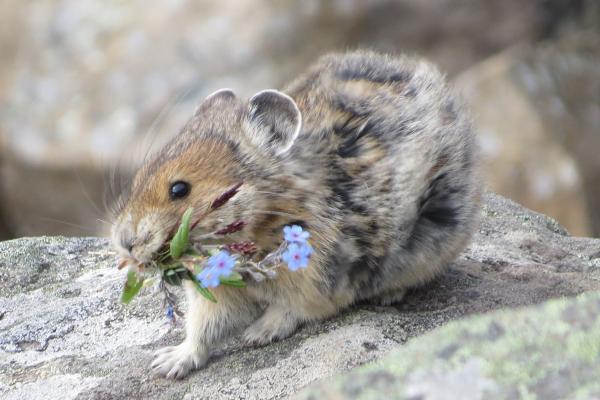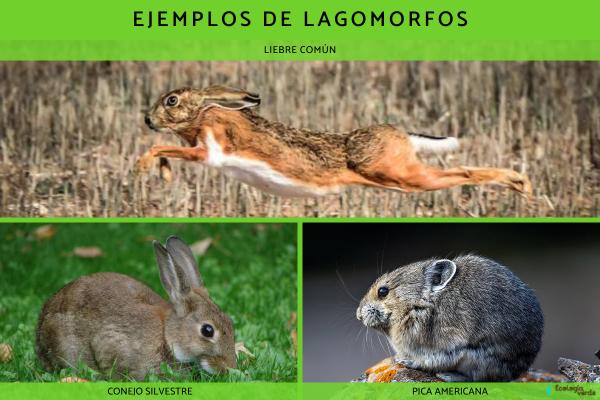You’ve probably seen someone keep a rabbit as a pet or heard of people eating hare meat. But did you know that these animals, along with the lesser-known pikas, all belong to a unique group of mammals called lagomorphs? Often confused with rodents due to their similar appearance, lagomorphs are a distinct order with their own evolutionary path. In this article, we’ll explore the main characteristics of lagomorphs, highlight notable examples, explain how they differ from rodents, and examine their ecological importance.

Lagomorphs belong to the order Lagomorpha, which includes medium-sized, fur-covered placental mammals known for their long ears, short tails, and powerful hind legs.
Soft, dense fur covering the body for insulation.
Terrestrial lifestyle across diverse habitats such as forests, grasslands, deserts, scrublands, and agricultural zones.
Herbivorous diet: They feed mainly on grass, but also consume roots, bark, fruits, and bulbs. Their activity can be diurnal, crepuscular, or nocturnal.
Coprophagy: They re-ingest their own feces to maximize nutrient absorption.
Unique dentition: They have two pairs of upper incisors (the second pair is small and located behind the first) and one pair of lower incisors.
Nine total toes: Five toes on the front limbs and four on the hind limbs, with strong, elongated hind legs that enable long jumps.
There are approximately 78 species of lagomorphs, divided into two families:
Ochotonidae – Pikas (one genus only)
Leporidae – Hares and rabbits
Despite similarities, members of these two families vary in size, limb proportions, and behavior. Let’s look at three prominent examples:
Prefers open fields and farmlands over dense forests.
Solitary and nocturnal; rests during the day camouflaged in vegetation.
Uses long ears and strong legs to detect and escape predators.
Found in grassy areas and woodlands, favoring soft soil for burrow-digging.
Nocturnal and social, with a hierarchical structure dominated by males.
The ancestor of most domesticated rabbits.
One of the smallest lagomorphs.
Lives in alpine meadows and rocky slopes across North America.
Diurnal and monogamous; prefers cold, moist mountain habitats.

Lagomorphs and rodents are often mistaken for one another, but key anatomical differences exist. While rodents include mice, rats, guinea pigs, squirrels, and prairie dogs, lagomorphs form their own distinct evolutionary group.
| Feature | Lagomorphs | Rodents |
|---|---|---|
| Upper incisors | 2 pairs | 1 pair |
| Ears | Large, for heat regulation | Typically small |
| Upper lip | Split into two parts (harelip) | Not typically split |
| Scrotum position | In front of the penis | Behind the penis |
| Fur coverage | Fur on legs and tail | Some species have naked patches |
| Baculum (penis bone) | Absent | Present |
Thus, lagomorphs differ from rodents in both dentition and reproductive anatomy, among other features.
Hares, rabbits, and pikas have existed for over 45 million years and play vital roles in ecosystems and human communities.
Trophic importance: They are key prey for predators like weasels, foxes, coyotes, eagles, owls, and snakes.
Vegetation control: By feeding on grasses, shrubs, and bark, they shape plant communities.
Seed dispersal: Their feces help spread plant seeds across landscapes.
Human food source: Rabbits and hares are consumed by various cultures.
Cultural symbolism: In many traditions, lagomorphs symbolize fertility, abundance, and good fortune (e.g., the "Year of the Rabbit" in Chinese zodiac).
Lagomorphs are more than just cute, long-eared animals—they’re essential players in nature and valuable to human societies. By understanding their physical traits, ecological roles, and evolutionary distinction from rodents, we gain a greater appreciation for these often-overlooked mammals.
Bibliography
Camps J. (2000). Iberian Rabbit. Evolution and taxonomy of leporids and the exclusive Iberian origin of wild and domestic rabbits. Available at: https://ddd.uab.cat/pub/jcamps/jcampsactpro/jcampsactpro_052.pdf
Camps J. (n.d.). From the "alilepus" to the "cuniculus". Available at: https://www.historiaveterinaria.org/update/origconi-1456742015.pdf
Soriguer RC, Palacios F. (1996). Iberian lagomorphs: hares and rabbits. Available at: https://www.researchgate.net/publication/256068496_LOS_LAGOMORFOS_IBERICOS_LIEBRES_Y_CONEJOS
(n.d.). (n.d.). Understanding and Conserving Mexican Lagomorphs. Ecofronteras 22-25. Available at: file:///C:/Users/user/Downloads/753-Texto%20del%20art%C3%ADculo-786-1-10-20131129.pdf
animal tags: Lagomorphs
We created this article in conjunction with AI technology, then made sure it was fact-checked and edited by a Animals Top editor.